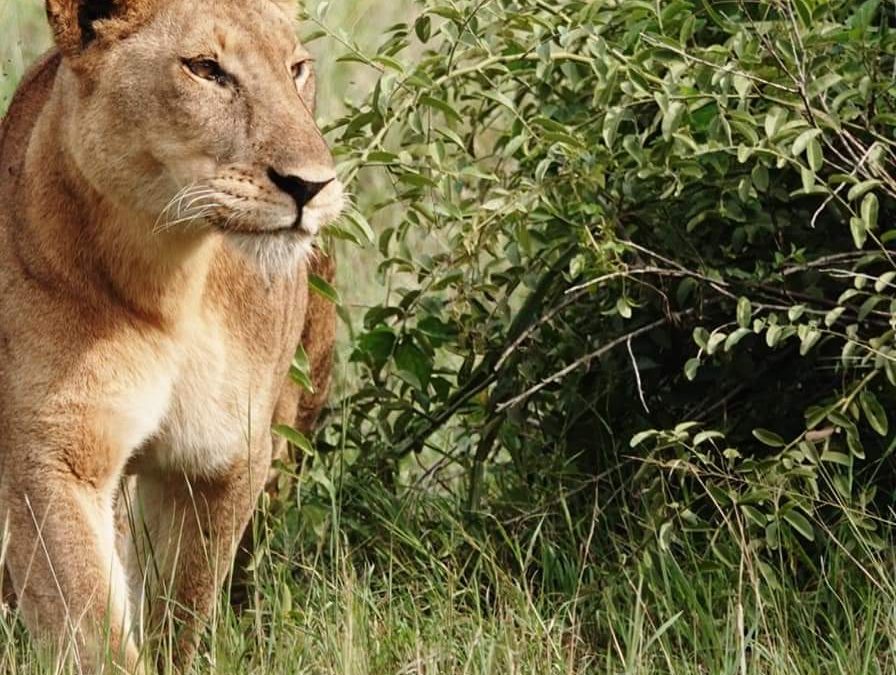African Wildlife Safari and Gorilla Tracking

African Wildlife Safari and Gorilla Tracking
African wildlife safari takes off with gorilla tracking in Bwindi Impenetrable National Park which lies in southwestern Uganda on the edge of the Rift Valley, famous for gorilla trekking safaris and It’s mist-covered hillsides are blanketed by one of Uganda’s oldest and most biologically diverse rain forests, which dates back over 25,000 years and contains almost 400 species of plants. More famously, this “impenetrable forest” also protects an estimated 320 mountain gorillas–roughly half of the world’s population, including several habituated groups, which can be tracked.
This biologically diverse region also provides shelter to a further 120 mammals, including several primate species such as baboons and chimpanzees, as well as elephants and antelopes. There are around 350 species of birds hosted in this forest, including 23 Albertine valley.
Kibale National Park contains one of the loveliest and most varied tracts of tropical forest in Uganda. Forest cover, interspersed with patches of grassland and swamp, dominates the northern and central parts of the park on an elevated plateau. The park is home to a total of 70 mammal species, most famously 13 species of primate including the chimpanzee, It also contains over 375 species of birds. Kibale adjoins Queen Elizabeth National Park to the south to create a 180km-long corridor for wildlife between Ishasha, the remote southern sector of Queen Elizabeth National Park, and Sebitoli in the north of Kibale National Park.
Gorilla Trekking Bwindi impenetrable national park.
We start off with a visit to bwindi Impenetrable National park in southwestern Uganda. En route, there is a local community popular for making local drums and crafts and a fruit market. Stopover, admire and buy yourself souvenirs. Proceed to the Equator line taken as one beautiful scenery in Africa – the pathway of the sun and take photographs. Pass by mountains, tropical rainforest and bamboo forest during the nine hour journey.
On our second day we go for gorilla tracking in Bwindi morning briefing before enjoying the highlight of the trip- Gorilla trekking, which may last the entire day. We trek the gorillas through the rain forest and bamboo covered slopes, accompanied by a guide and trackers, in search of a mountain gorilla family. The walking can sometimes be tough and long, but when you catch a glimpse of the magnificent silverback, any discomforts will be quickly forgotten.
When the gorillas are sighted, visitors will be guided to within 6metres from the gorillas, sit around them for a whole hour while gazing into their big round eyes. Gorilla trekking is unpredictable. It’s difficult to foresee how many hours you will hike. The gorilla excursion can take from 2 up to 8 hours. Expect to walk along distance in steep and muddy conditions, sometimes with rain overhead, before you encounter any gorillas.
A good physical condition is recommended. For conservation purposes, time spent with the gorillas is limited to one hour. A ranger will brief you on how to behave with the gorillas.
While most of today’s forests are no more than 12,000 years old, Bwindi’s vegetation has been weaving itself into tangles over at least 25,000 years, in the process accumulating a lengthy species list. This includes 310 species of butterfly, 51 reptiles, 200 trees, 88 moths and an exceptional 120 types of mammal including 10 primates. The latter includes L’Hoest’s, red tailed and blue monkey, black and white colobus, baboon, and Bwindi’s most famous resident, the mountain gorilla. Bwindi is a prime destination for birdwatchers. Its 350 species include seven which are IUCN red data listed and 90% of all Albertine rift endemics, species which are difficult or impossible to see in any other part of Africa.
Queen Elizabeth National Park.
On this African Wildlife Safari and Gorilla Tracking from Bwindi it takes to Ishasha Sector (famous for tree-climbing lions) stunning savannah grasslands as we head to the southern sector of Queen Elizabeth National Park, Ishasha a much more remote and less-traveled part of Queen Elizabeth National Park, but one which has a sense of exclusivity and remoteness. The game densities here are high, and this region has reported some of the largest herds of Elephant anywhere in Uganda, as it is their main migration corridor between Uganda and the DRC. As we enter the park, we do a game drive in search of the wild game. We continue and drive to the northern circuit which is the area near the main road known for its tree climbing lions. We look particularly at the many fig trees where lions like to stay. But we also visit the Uganda kob mating ground which is their preferred hunting area.
On this African Wildlife Safari in Queen Elizabeth National Park, Game drive to see lions, leopard, elephant, buffalo, etc We set out early in the morning for a game drive in the northern part of the park on the Kasenyi Track in search of lions, elephants, solitary buffaloes. This is the best time for opportunities of viewing the cats in action owing to the vast population of Uganda Kobs. We have an excellent chance to view just about every animal here at very close range. In the afternoon we will go for a launch trip along the Kazinga Channel. This gives you the opportunity to view wildlife up close: hippo’s huff and spray at mere feet away from the boat, buffalo linger in the shallows.
Our Other African Wildlife Safari and Gorilla Tracking Packages:
- 3 Days Ssese Islands Tour Holiday
- 3 Days Uganda Gorilla Safari
- 5 Days Chimpanzee & Gorilla Trekking Safari
- 6 Days Gorilla Trekking & Wildlife Safari





